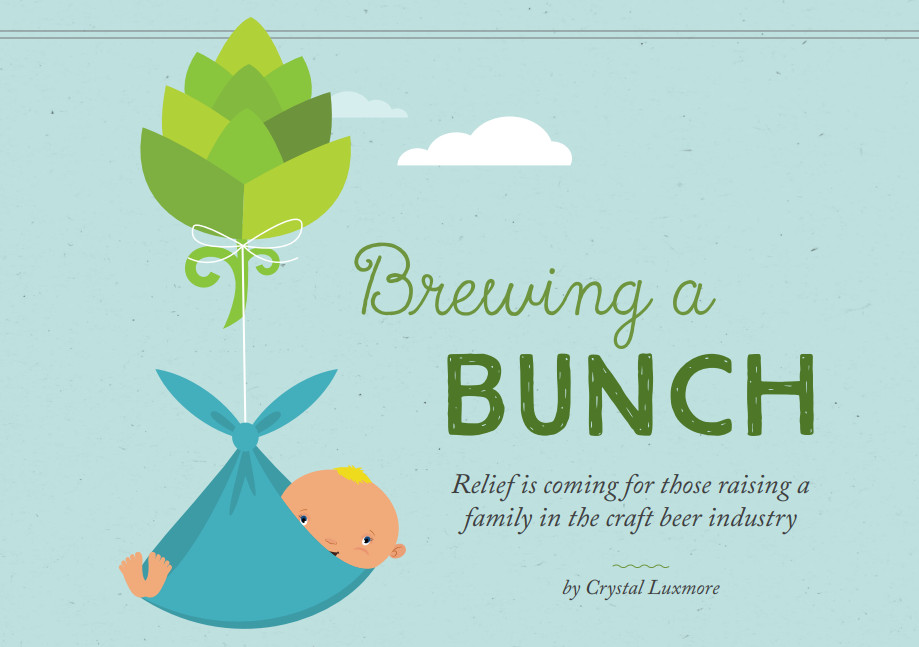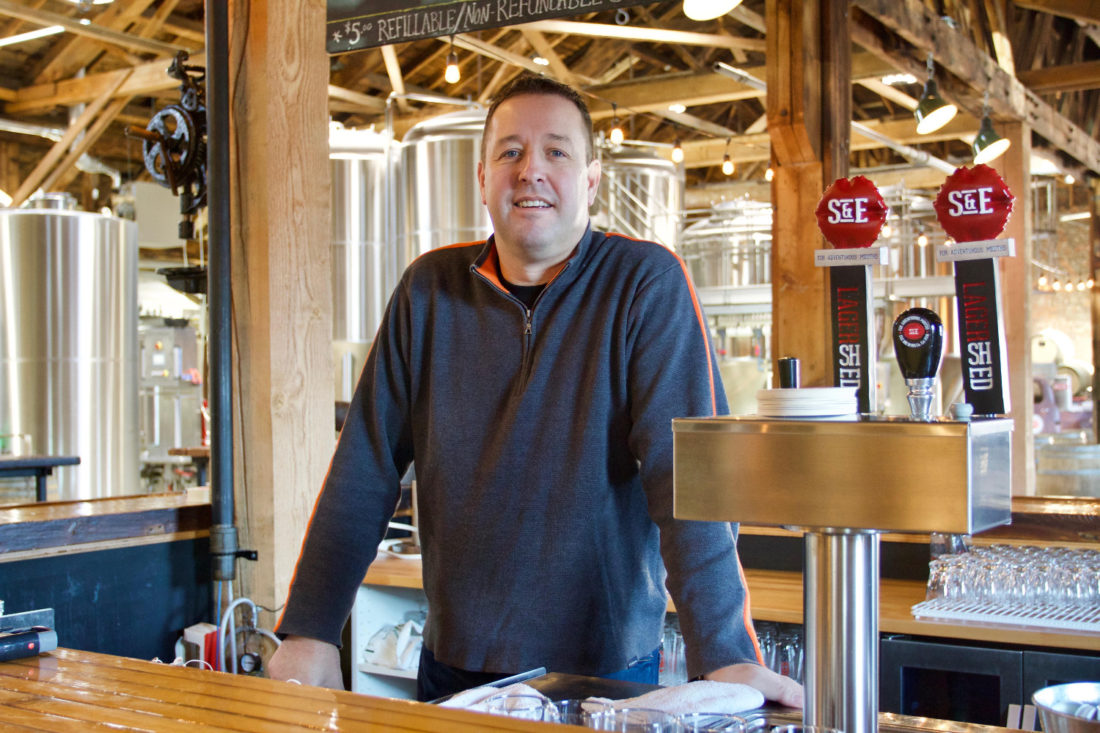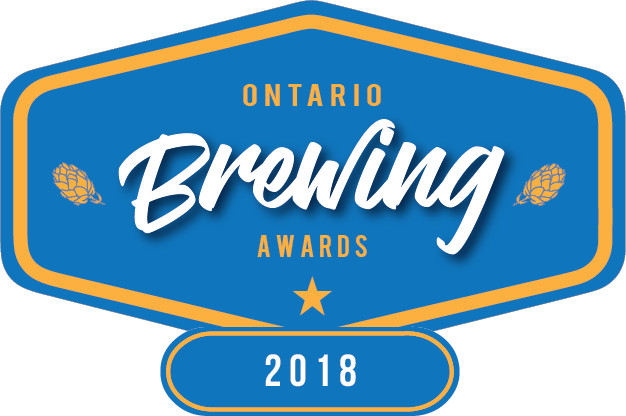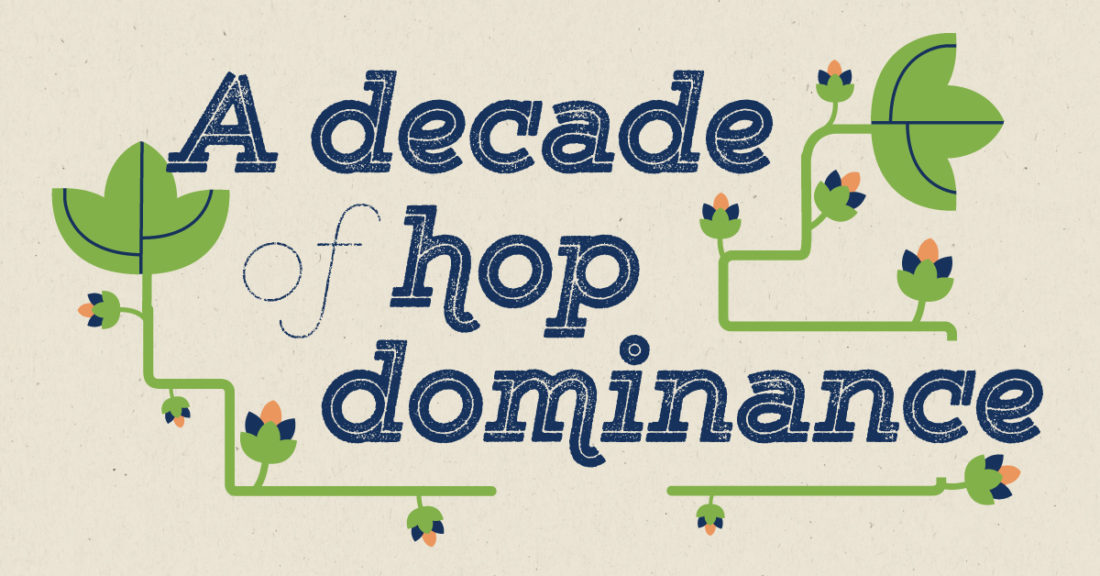
It’s the best selling style of craft beer in North America. The number of variants that exist are incredible. The beer world is going through an unprecedented explosion of ingredients and innovation. Individual hop varieties have created a range of aromas and flavours brewers are keen to explore. Brewing techniques, like kettle souring and new hop-delivery systems, allow for tweaks that we’ve never seen before, changing acidity and texture. It really is the golden age of IPAs.
I’ve created a helpful timeline of IPA brewing in Ontario so you can see how we progressed to the current situation. It is, in some ways, the story of the Ontario market catching up to the rest of North America.
Prior to 2009: Scotch Irish Sgt. Major
A decade ago, there wasn’t really IPA in Ontario. You could find one if you knew where to look and the most dependable version of it in Toronto was the Scotch Irish Brewing Company’s Sgt. Major. It was on tap in about three bars within the city and loosely took 1990s West Coast American IPAs as its inspiration. At the LCBO, it came in stubby bottles with the kind of label that would end up in a Terry Gilliam animation.
In terms of flavour profile, we’re talking classic: pine and grapefruit with a little bit of herbal/leafy interest. The combination of chinook and goldings made for a hybrid of exuberant American craft brewing and reserved English subtlety. At 68 IBUs, it was toward the top end of the spectrum of bitterness for the style but was balanced by crystal and chocolate malts.
2010: Duggan’s No. 9
The winner of the inaugural Bar Volo IPA Challenge, Duggan’s No. 9 IPA benefited somewhat from the cask format service of that competition. Mike Duggan had been a co-founder at Mill Street, so it’s little surprise that No. 9 IPA bore some similarities to their Tankhouse Ale, still a core offering.
The beer’s grist claims eight varieties of malt and a single variety of hops: cascade. The pine and white grapefruit certainly stick out above the depth of the body, but it’s difficult to think of it as hop driven. The caramel, biscuit and light roast linger on the palate with the bitterness, making this an odd hybrid. Is it a 55 IBU American brown ale? Eventually, everyone settled on “Ontario pale ale.”
2011: Flying Monkey’s Smashbomb Atomic IPA
What if instead of leaning on English malt varieties and beer styles, you just did away with the specialty malts and focused on making a hop-dominant beer? After all, American craft brewers had been doing it for a couple of decades. Eventually the recipe would change and the malt character would darken, but initially, Smashbomb was a single malt, single hop beer.
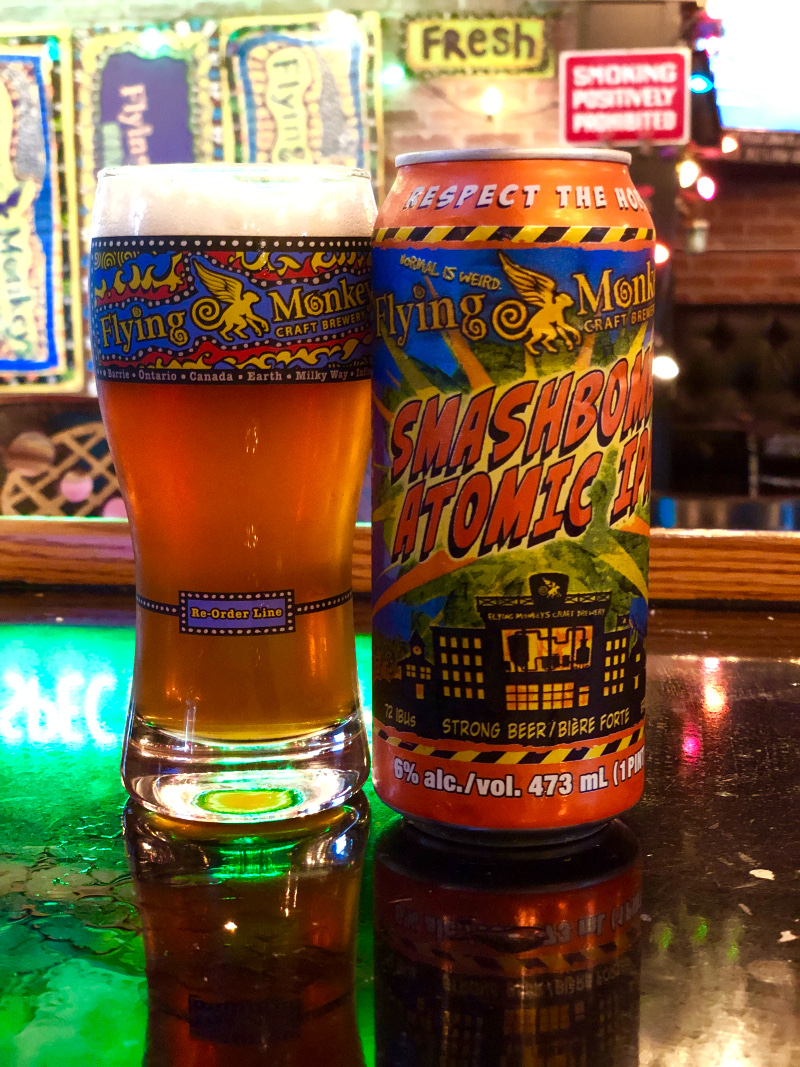
That hop was citra: lemon peel, mango, and gooseberry, with a (slight) sting of cat pee lingering somewhere in the back. At 72 IBU, the beer was massively bitter, and also represented a fundamental shift in the market from established hop varieties to newer, more experimental ingredients. Like Sgt. Major had with its label design, this beer pushed the boundaries of what the LCBO considered acceptable and was very nearly banned for its name.
To this day, Boneshaker is one of the best-selling IPAs in Ontario. At 7.1% alcohol and 80 IBU, it was innovative in terms of its scale. Compared to previously available versions of the style, it feels bigger and more complex. If Duggan’s No.9 IPA seemed to lean in balance towards malt profile, then Amsterdam’s Boneshaker swung the other way, albeit using some of the same flavours.
The beer was initially an exercise in seeing how many hops could fit in a beer, using a single hop variety and a continuous hopping method. The amarillo has notes of orange veering specifically to tangerine, and pine. The current version uses centennial, summit and chinook, and is better for that combination. The malt profile has gotten smoother as time has passed as well.
2013: Muskoka Twice As Mad Tom DIPA
For those who had been paying attention, double IPA was a much sought after commodity. Black Oak’s Ten Bitter Years had pioneered the style in the market but didn’t make it to LCBO shelves for years. In the meantime, Muskoka had been working away in the hop mines, harvesting nuggets for the consumer. Mad Tom was one of the first widely available IPAs in the province. Twice As Mad Tom was the first general list imperial IPA.
At 71 IBU, it more closely modelled itself on contemporaneous West Coast double IPAs, featuring chinook, columbus, and cascade hops for a variety of citrus and tropical fruit flavours. The 8.4% alcohol helped to balance the bitterness and hop character despite the absence of darker specialty malts. Imagine a beer that comes across as fruit salad instead of a pine bough in the face, and you begin to get the idea. Balanced enough to be a dangerous quaffer.
2014: Great Lakes Brewing Thrust! An IPA
In 2014, Great Lakes took gold, silver, and bronze in the American-style IPA category at the Canadian Brewing Awards. Karma Citra and My Bitter Wife were just behind Thrust! An IPA in the rankings, and for good reason. Thrust! An IPA represents innovation in terms of geography and technique. The nelson sauvin hops used here are from New Zealand and the flavour profile was more like lychee, mango, gooseberry and sauvignon blanc grape’s minerality.
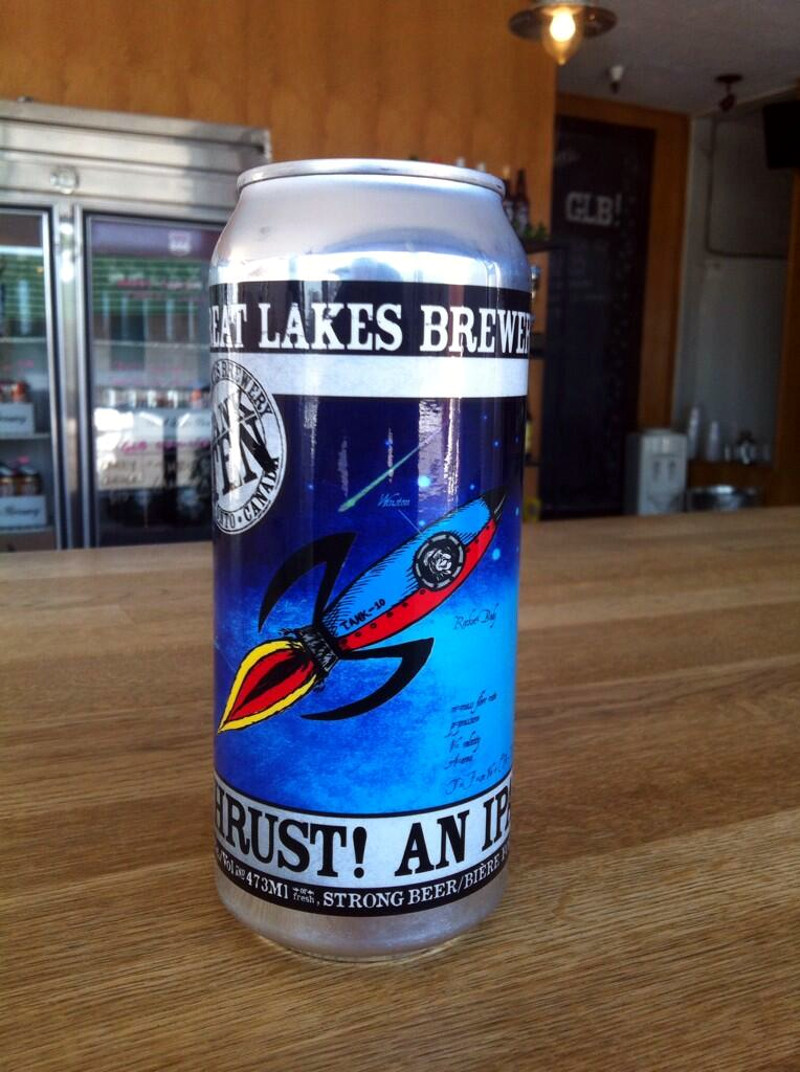
In terms of flavour profile, this is a total departure from previous IPAs in Ontario. While the beer is still 72 IBU, that’s a calculated figure and hops are beginning a shift from the beginning of the boil to the whirlpool and fermenter. Less bitterness and more aroma. More haze. More juice. Thrust! An IPA was a push in that direction.
2015: Collective Arts Ransack the Universe
Yes, the art design is fantastic, but the beer underneath is the real reason for Collective Arts’ success. They’re currently on their 11th one-off IPA in a series, but their biggest seller, Ransack The Universe shows little sign of slowing. It contains galaxy and mosaic hops, and for the first time represented Ontario brewers keeping up with international trends. Those varieties exploded in acreage in 2015.
Mosaic is complex and can run from mango through an entire range of tropical and stone fruits while even managing a touch of blueberry. Galaxy, the Australian variety, brings out citrus, peach, and passionfruit. Ransack The Universe contains massive amounts of both varieties, but later in the brewing process, retaining the aromas. It’s around this time that bitterness became less the hallmark of IPA than massive hop aromas.
2016: Mill Street West Coast IPA
I know, I know. They’re the evil empire. However, before they were purchased, Mill Street made a West Coast IPA that simply isn’t a West Coast IPA. You wouldn’t think an entity that large would be responsible for giving the game away, but they did. Beyond this beer, you can argue the term IPA no longer means that the style is defined by bitterness.
Mill Street’s West Coast IPA is 50% wheat, which West Coast IPAs are not. Part of the mash is intentionally soured, which is not something that happens in IPAs. It uses German hallertau blanc hops to add a hint of melon and stone fruit. It is aged on toasted French oak to give it texture. There isn’t anything West Coast about it. It tasted like an outsize witbier. It was still pretty good.
2017: Bellwoods Milkshark
Bellwoods has had many fine IPAs over the years, but none of them created quite the buzz of their Milkshark series. Yes, people own Cat Lady t-shirts, but Milkshark is something else. Using their excellent Witchshark double IPA as a base, Bellwoods began to experiment with additional ingredients. Take the pineapple version: it’s made with lactose sugar and apple pectin, and conditioned on vanilla and pineapple puree.
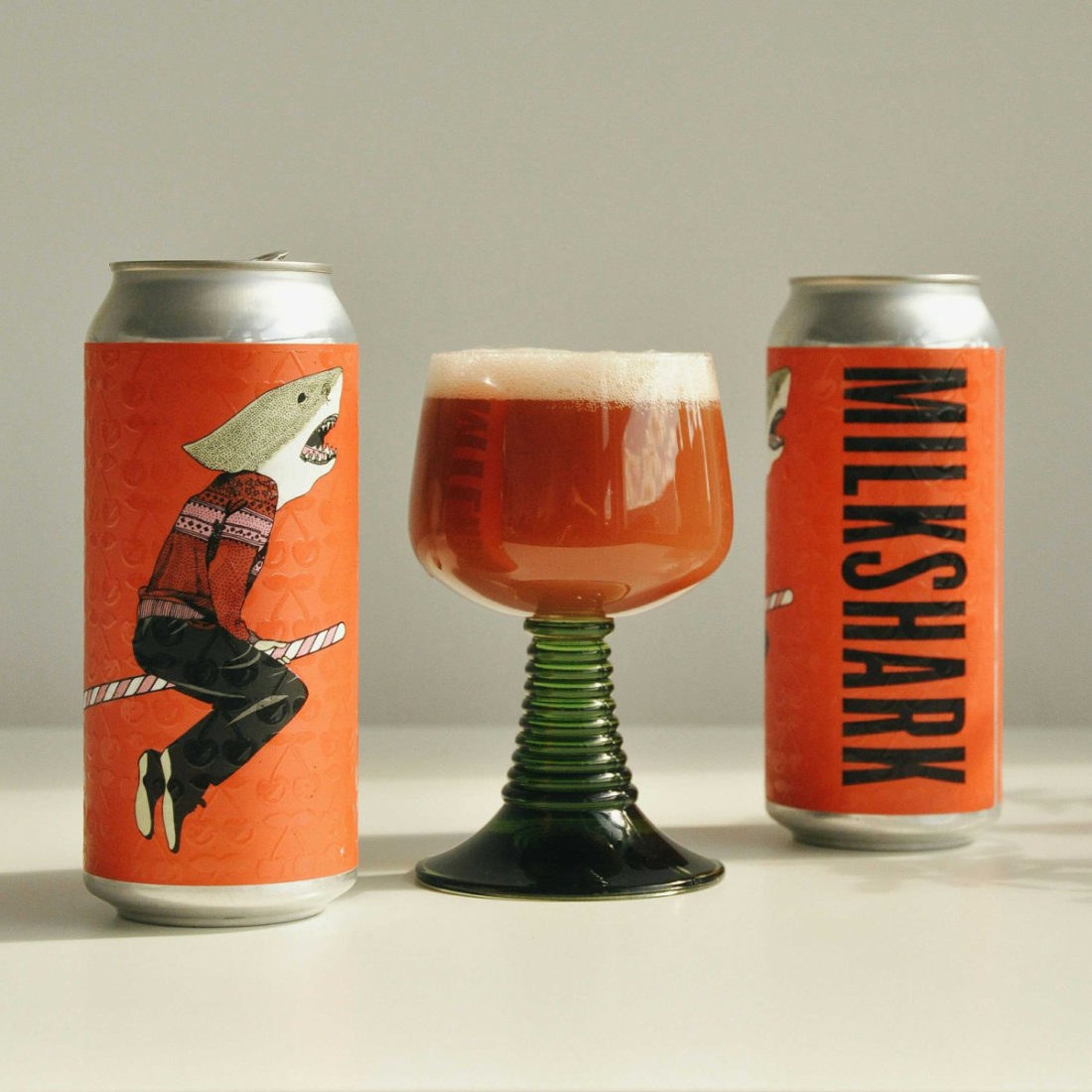
Of course, just one version won’t do when there is so much fruit out there. You could view milkshake IPA as a natural extension of the already extant fruit flavour profile imparted by modern hop varieties. Or, you could view it as a step too far away from bitterness as a defining aspect of flavour. Either way, you’re going to view it from about a half-block up Ossington as people line up early for these.
2018: Merit One For Us Brut IPA
Mass communication is a wonderful thing. Ideas travel the world extremely quickly. Just months after the creation of brut IPA, Merit was working away on their own version, having been in touch with the innovating brewery in San Francisco. Brut IPA uses an enzyme to break down complex sugars so that the yeast can eat away at them in fermentation, leaving a bone-dry finished beer.
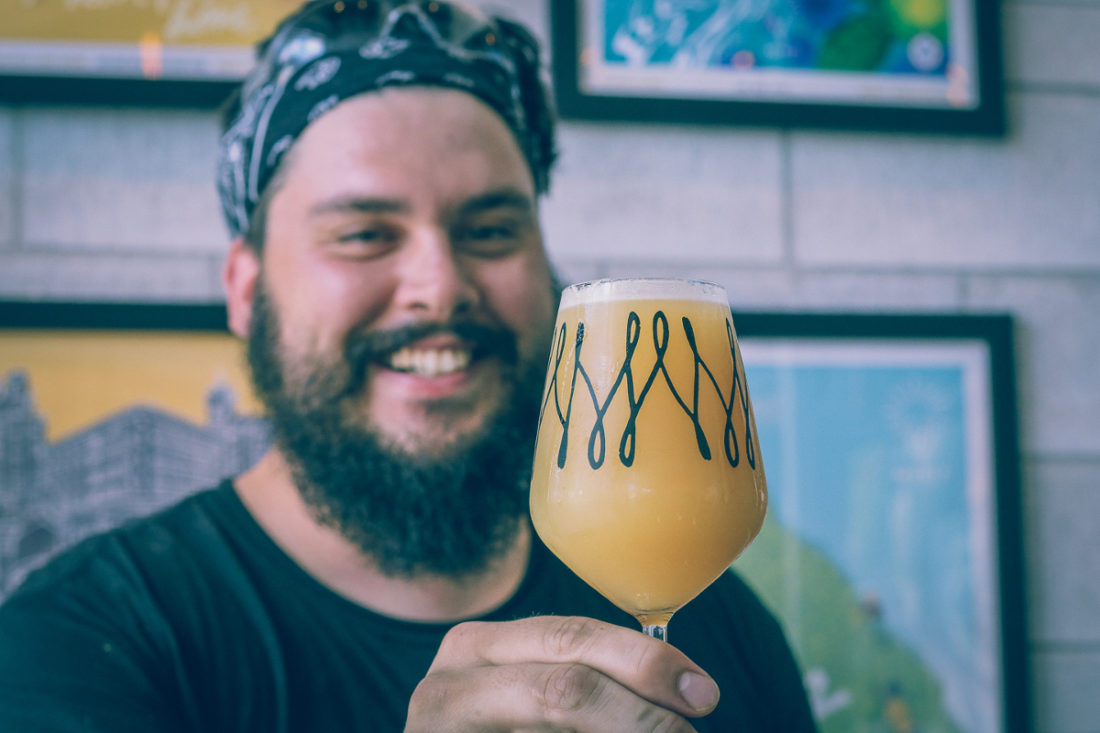
In the case of Merit’s version, which used citra (American), ella (Australian) and mandarina bavaria and hallertau blanc (German), there’s a lot of complexity on display. The minerality of a sauvignon blanc and the effervescence of a Champagne work in concert here with the stone and tropical fruit character of the hops.
2019 forward
What will the future hold for IPA? It’s impossible to say. Toronto’s Godspeed has created the throwback Mondai Kristall IPA, an IPA you can actually see through. Fairweather’s Late Lunch is a sour IPA featuring pineapple, lemon, vanilla, ginger and lactose. Also, Flying Monkeys made Sparklepuff.
All I know is that nothing seems to fall out of the market, meaning that there’s something for everyone. It’s a lot easier than having to know which bar carries Sgt. Major. j


